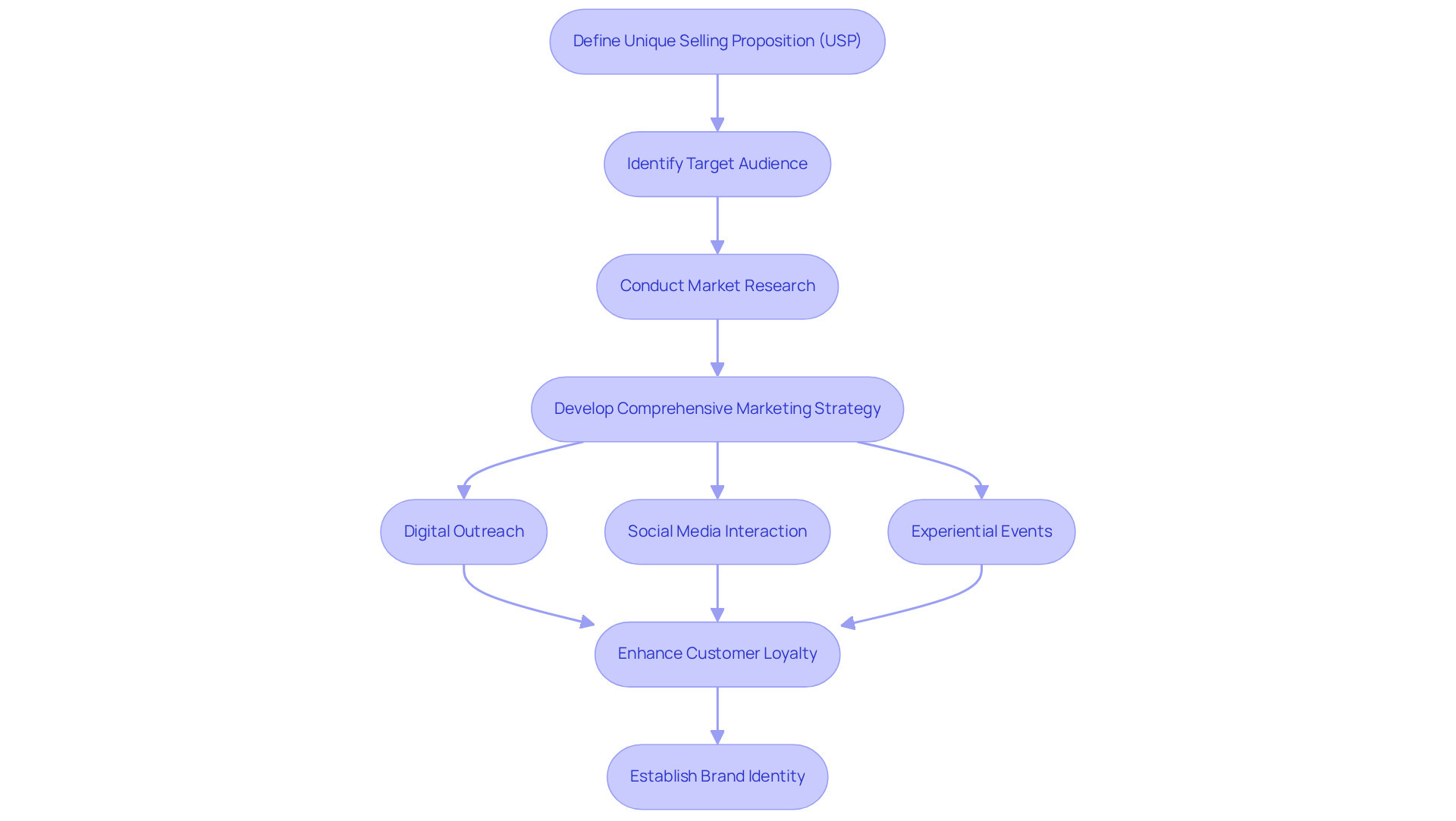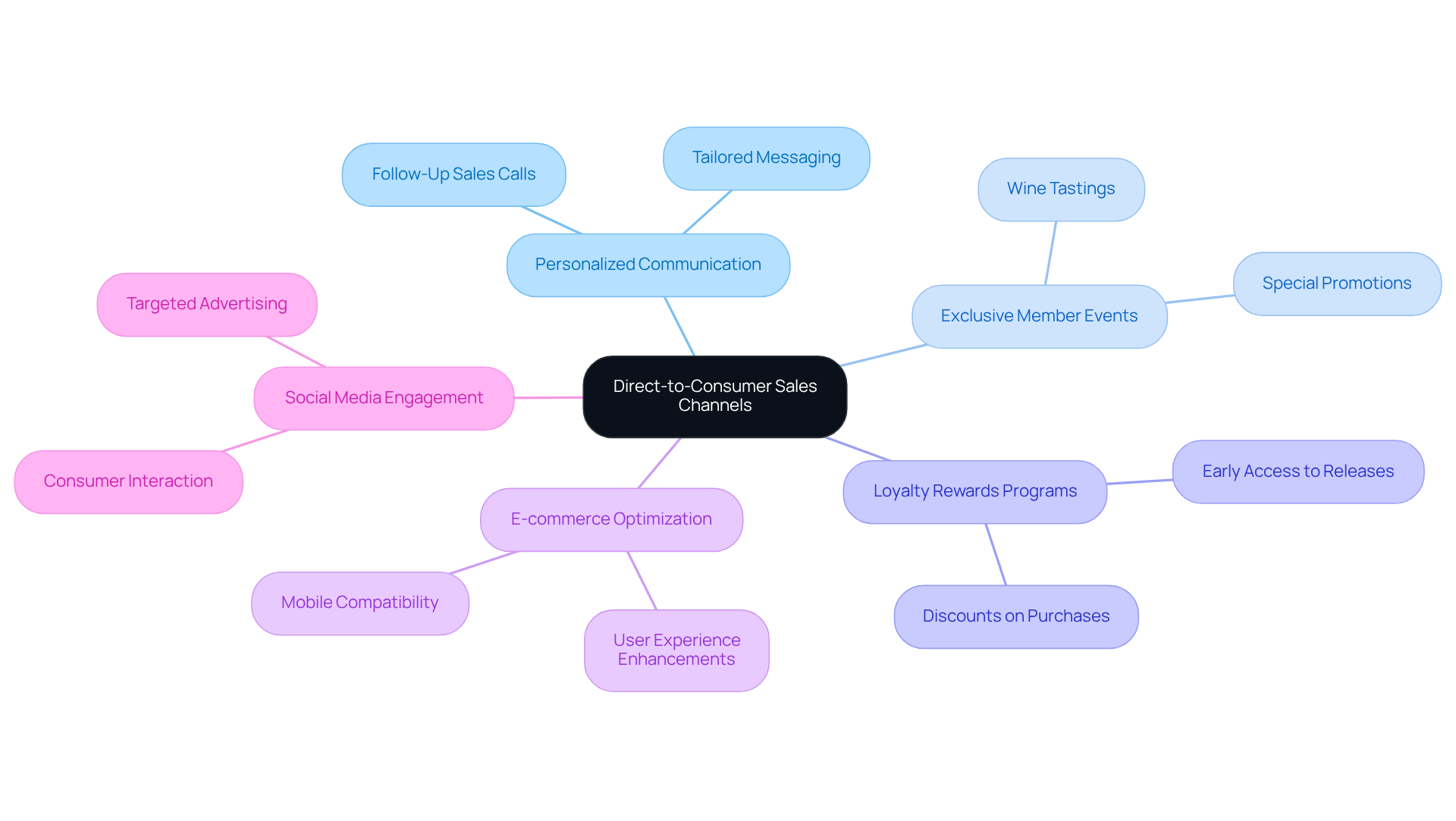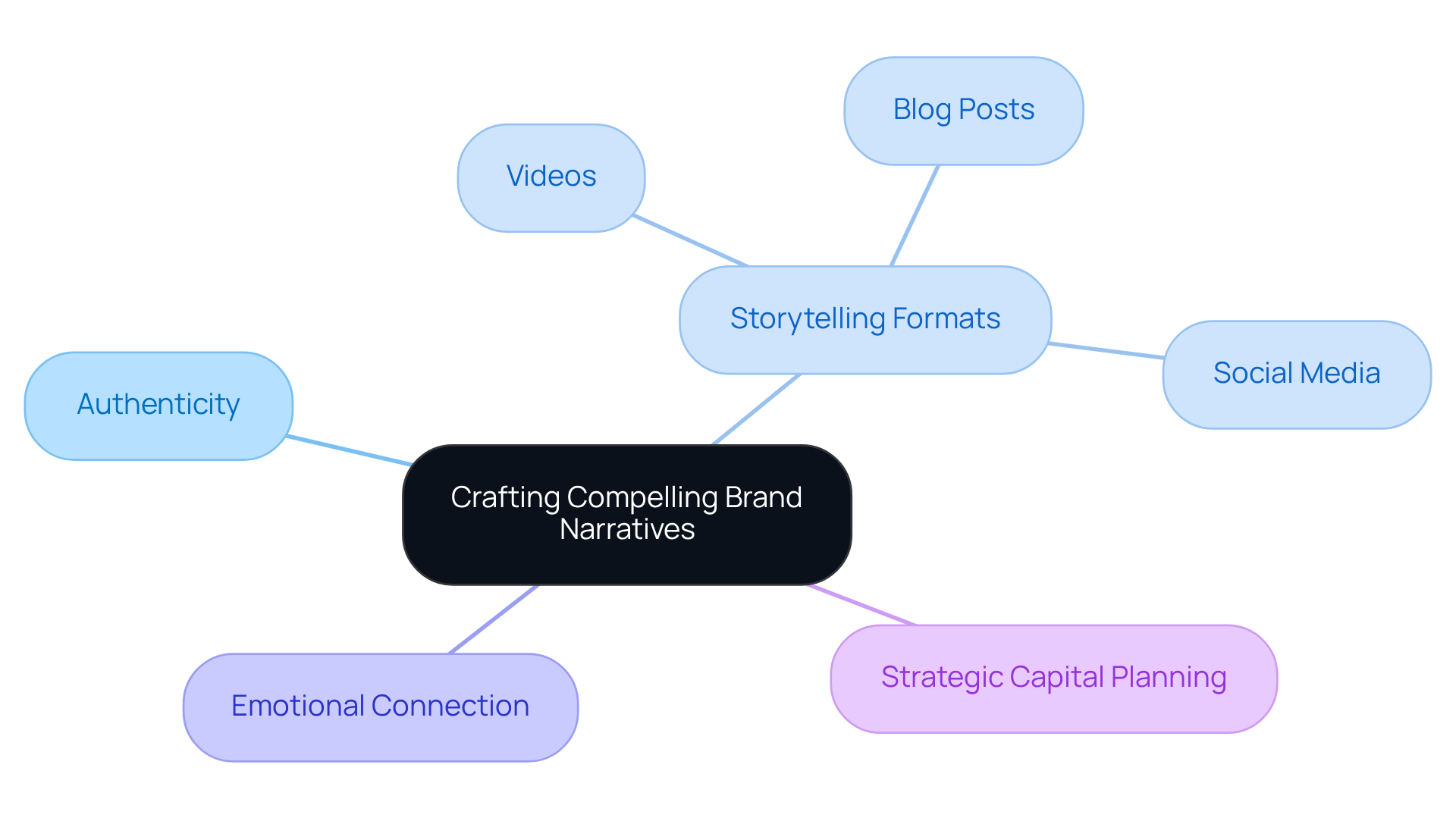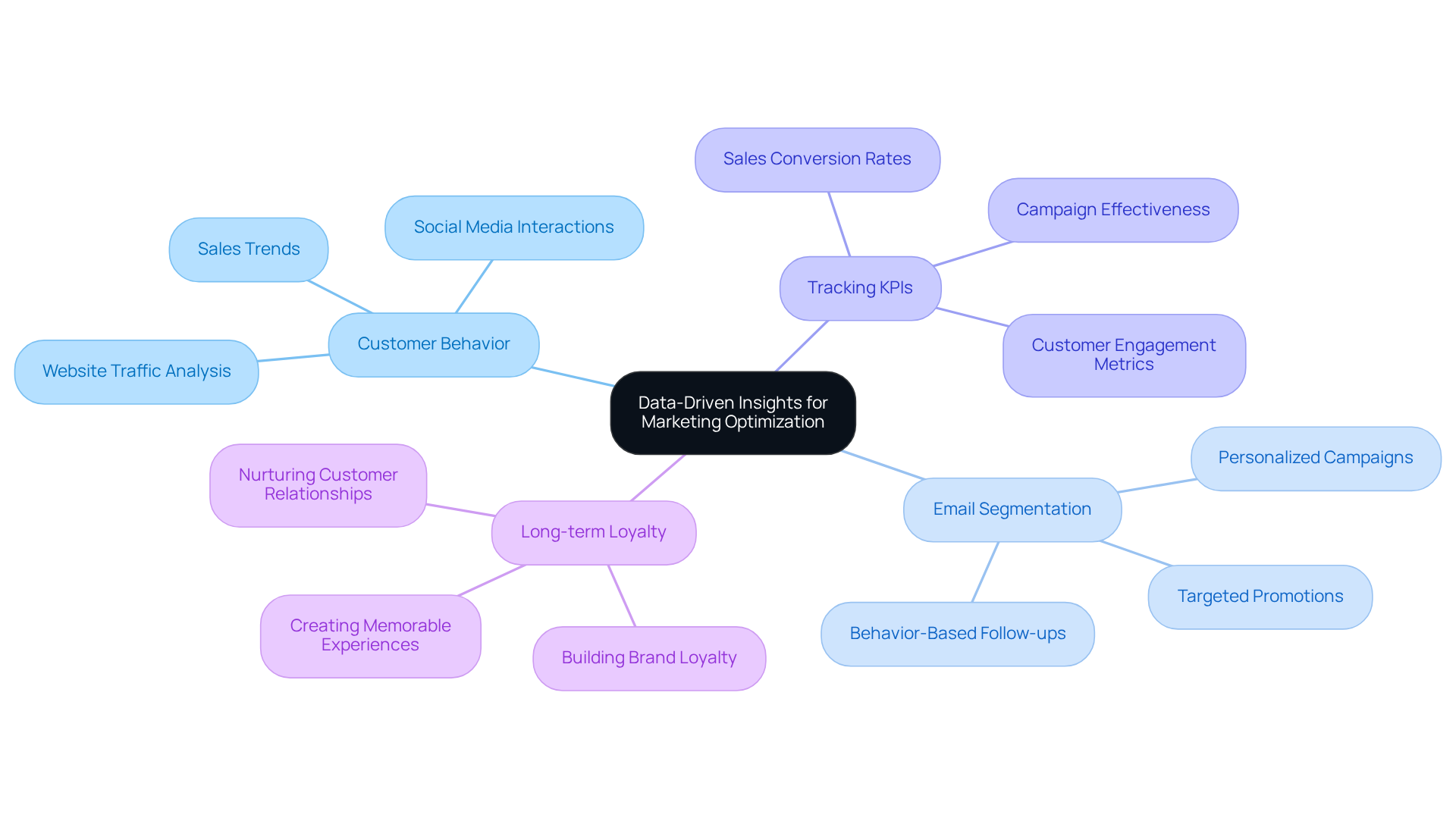Overview
Family-owned wineries can significantly enhance their marketing effectiveness by implementing key strategies.
- Defining a unique selling proposition is essential.
- This sets the foundation for leveraging direct-to-consumer sales channels, which are increasingly vital in today's market.
- Additionally, crafting compelling brand narratives not only captures attention but also fosters a deeper connection with customers.
- Utilizing data-driven insights further strengthens these efforts by informing decisions and adapting to evolving market trends.
These strategies not only foster customer loyalty and engagement but also lead to increased revenue and a stronger brand identity. By embracing these approaches, wineries can position themselves effectively in a competitive landscape, ensuring they not only meet but exceed customer expectations. In doing so, they not only drive sales but also cultivate a lasting relationship with their audience, ultimately solidifying their presence in the industry.
Introduction
In a landscape where consumer preferences are rapidly evolving, family-owned wineries confront the distinct challenge of distinguishing themselves amid fierce competition. By adopting innovative marketing strategies, these wineries can significantly enhance their visibility while cultivating enduring connections with their audience.
What essential tactics can they deploy to transform casual patrons into loyal customers? Furthermore, how can they leverage their rich heritage to craft compelling narratives that resonate with modern wine enthusiasts?
Establish Core Marketing Strategies for Wineries
To establish effective promotional strategies in wine marketing, family-owned wineries must first define their unique selling proposition (USP) and identify their target audience. This essential process begins with thorough market research to grasp consumer preferences and emerging trends. For instance, as the U.S. beverage market is projected to reach $33.4 billion in 2025, understanding the demographics of potential customers—particularly the growing interest among Millennials and Gen Z—becomes crucial.
With this foundation, wineries can develop a that incorporates digital outreach, social media interaction, and experiential event promotion. Hosting wine tastings or vineyard tours not only creates memorable experiences but also fosters a deeper connection with consumers. Furthermore, utilizing email communication to keep customers updated on new releases and upcoming events can significantly enhance customer loyalty.
A well-rounded strategy that combines conventional and online wine marketing techniques will empower vineyards to establish a robust brand identity and effectively boost revenue. By concentrating on storytelling and community involvement, family-owned businesses can distinguish themselves in a competitive environment, securing lasting success.

Leverage Direct-to-Consumer Sales Channels
Wineries must prioritize the creation of robust direct-to-consumer (DTC) sales channels, particularly through e-commerce platforms and clubs, as part of their wine marketing efforts. Enocap underscores the importance of crafting compelling brand narratives within wine marketing that resonate with consumers, significantly enhancing engagement and loyalty.
To transform casual buyers into devoted club members, wineries should implement wine marketing strategies such as:
- Personalized communication
- Exclusive member events
- Loyalty rewards programs
An engaging online shopping experience is essential for wine marketing; this involves optimizing websites for user experience and ensuring mobile compatibility. Exclusive membership advantages, such as discounts and early access to new releases, serve as effective incentives for customers to join clubs focused on wine marketing.
Notably, in 2022, club revenue surpassed tasting room income for the first time, underscoring their increasing significance in the wine marketing direct-to-consumer landscape. Furthermore, leveraging social media platforms for wine marketing to promote DTC transactions and interact with consumers can markedly enhance visibility. For instance, targeted advertising on platforms like Instagram and Facebook is a crucial part of wine marketing that effectively reaches potential customers.
Additionally, 20% of vineyards are employing digital marketing techniques, including wine marketing beyond social media, to expand their membership clubs, highlighting the range of strategies available. With beverage clubs representing , focusing on wine marketing through these channels not only enhances profit margins but also fosters a loyal customer base.
As U.S. wine marketing revenue is projected to reach $109 billion in 2024, reflecting a 3.42% increase from the previous year, producers that adapt their tactics to align with evolving consumer preferences will be well-positioned for success. The ongoing decline in average visitation to tasting rooms further emphasizes the necessity of optimizing wine marketing strategies through DTC channels. Enocap's strategic capital planning can also assist vineyards in navigating debt, equity, or acquisition opportunities, ensuring they thrive for generations.

Craft Compelling Brand Narratives
Wineries must prioritize the development of that genuinely reflect their heritage, values, and production processes. This endeavor can be realized by sharing compelling stories about the vineyard's history, the intricacies of the winemaking process, and the dedicated individuals behind the brand.
Enocap underscores the significance of crafting engaging narratives that resonate with consumers and drive sales, demonstrating how effective storytelling can transform casual buyers into loyal club members. By utilizing diverse content formats—such as videos, blog posts, and social media updates—these narratives can be conveyed with impact.
For instance, a vineyard might create a video series that illustrates the journey of a specific beverage from grape to bottle, highlighting the skill and artistry involved. Engaging storytelling not only captivates consumers but also cultivates a deeper emotional connection, prompting them to select that brand over its competitors.
Moreover, strategic capital planning is crucial in these initiatives, as it aids producers in obtaining the necessary funding to enhance marketing efforts and broaden direct-to-consumer channels. Enocap's methodology encompasses performance analysis and tailored strategies that ensure family-owned vineyards thrive for generations. Notably, there have been demonstrated outcomes, such as a 27% increase in club signups attributed to digital storytelling.

Utilize Data-Driven Insights for Marketing Optimization
To excel in the competitive wine marketing of today, producers must harness to glean insights into customer behavior, preferences, and emerging market trends. By scrutinizing information from diverse sources—such as website traffic, social media interactions, and sales trends—wineries can refine their wine marketing strategies to better align with consumer expectations. For instance, segmenting email lists based on customer preferences empowers vineyards to craft tailored promotional campaigns that resonate more effectively with their audience. Research demonstrates that personalized email campaigns can yield transaction rates six times higher than their generic counterparts, underscoring the significance of customized communication.
Moreover, tracking the effectiveness of promotional initiatives through key performance indicators (KPIs) in wine marketing allows vineyards to identify successful strategies while pinpointing areas in need of improvement. This data-driven methodology not only enhances wine marketing efficacy but also cultivates long-term customer loyalty. As vineyards embrace these analytics-driven strategies, they position themselves for sustainable growth in an ever-evolving industry landscape. By integrating Enocap's expertise in strategic capital planning, family-owned wineries can unlock fresh growth opportunities and transform casual buyers into devoted club members.

Conclusion
Family-owned wineries possess a distinct opportunity to excel in a competitive market by implementing effective wine marketing strategies that align with their strengths and consumer preferences. By clearly defining their unique selling propositions and gaining a deep understanding of their target audiences, these wineries can craft compelling narratives that resonate with consumers, ultimately fostering loyalty and engagement.
This article underscores four essential strategies:
- Establishing core marketing approaches
- Leveraging direct-to-consumer sales channels
- Crafting authentic brand narratives
- Utilizing data-driven insights for optimization
Each of these components is critical in enhancing brand visibility, driving sales, and cultivating lasting relationships with customers. As the industry continues to evolve, adapting to shifting consumer behaviors and preferences through innovative marketing tactics will be paramount for sustained success.
In conclusion, family-owned wineries must embrace these strategies not only to distinguish themselves in the marketplace but also to ensure sustainable growth for future generations. By prioritizing storytelling, community engagement, and data-driven decision-making, these businesses can effectively cultivate a loyal customer base and navigate the complexities of the wine industry. The time is now for wineries to harness these insights and transform their marketing efforts, ultimately securing their place in the hearts of consumers and the broader market.
Frequently Asked Questions
What is the first step for wineries to establish effective promotional strategies?
The first step is to define their unique selling proposition (USP) and identify their target audience through thorough market research.
Why is understanding consumer preferences important for wineries?
Understanding consumer preferences is crucial because it helps wineries grasp emerging trends and the demographics of potential customers, particularly the growing interest among Millennials and Gen Z.
What elements should a comprehensive wine marketing strategy include?
A comprehensive wine marketing strategy should include digital outreach, social media interaction, and experiential event promotion.
How can wineries create memorable experiences for consumers?
Wineries can create memorable experiences by hosting wine tastings or vineyard tours, which foster a deeper connection with consumers.
What role does email communication play in wine marketing?
Email communication is important for keeping customers updated on new releases and upcoming events, which can significantly enhance customer loyalty.
What combination of techniques can empower vineyards to establish a robust brand identity?
A well-rounded strategy that combines conventional and online wine marketing techniques can empower vineyards to establish a robust brand identity and boost revenue.
How can family-owned wineries distinguish themselves in a competitive market?
Family-owned wineries can distinguish themselves by concentrating on storytelling and community involvement, which can secure lasting success.




